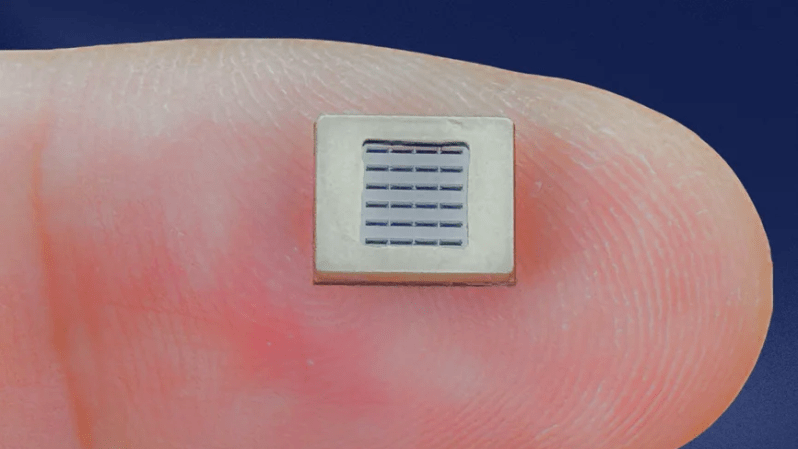Conventional speakers work by moving air around to create sound, but tiny speakers that use ultrasonic frequencies to create pressure and generate sound opens some new doors, especially in terms of maximum achievable volume.
A new design boasts being the first 140 dB, full-range MEMS speaker. But that kind of volume potential has less to do with delivering music at an ear-splitting volume and more to do with performing truly effective noise cancellation even in a small device like earbuds. Cancelling out the jackhammers of the world requires parts able to really deliver a punch, especially in low frequencies. That’s something that’s not so easy to do in a tiny form factor. The new device is the Cypress, from MEMS speaker manufacturer xMEMS and samples are aiming to ship in June 2024.
Combining ultrasonic waves to create audible sound is something we’ve seen show up in different ways, like using an array of transducers to focus sound like a laser beam. Another thing ultrasonics can do is cause sensors in complex electronics to become unhinged from reality and report false readings. Neato!
















This has been around for years. Promising – but promising does not equal reality. You must remember, quality sound requires pre-distortion digital signal processing linearization and physical transducers capable of handling the needed dynamic range, which can exceed 120 dB.
Older HaD post:
https://hackaday.com/2023/11/15/after-mems-microphones-mems-speakers-enter-the-market/
FWIW the company:
https://xmems.com/
Wish them luck…
Seriously. And if any of that goes wrong, and your generated audio is anything but perfectly out of phase you will get additive and instead of 140dB cancelling out 140dB, you will get super super loud instant hearing loss.
For cancelling out a jackhammer passive is the way to go.
I’ve had my AirPods ajar and the squealing is annoying but I can still hear. Another example- my father in law’s hearing aids- $5k devices- that when they are inserted you can hear the squeal from across the room.
I agree in theory, but my (cheaper) ANC earbuds don’t squeal on insertion or otherwise. I sort of assumed they sampled the result to make sure they’d gotten it right?
In the case of some ANC earbuds I picked up they clearly do – there is a small microphone ported into the ear silicon that makes the thing howl horribly if it gets clogged up and is put in ANC mode (makes no difference in active passthrough or passive modes as far as I can tell).
Biggest problem with this lot is how much snake oil marketing goes on to pretend you have a feature well implemented, yet no party every tells you how they set theirs up so you have to buy ’em and then possibly even take them apart to find out.
Ah, yep that’d be a reasonable cause of issues.
I’ve had to stop using noise cancellation or transparency modes on my airpods because they’ve started occasionally making a shrieking or popping noise which feels loud enough to cause hearing loss. Rather annoying to lose one of the main features for such an expensive product.
An All-Chinese company marketed with a chimp on their front page does not instill a lot of confidence. Is the sound quality better than electrodynamic transducer? Is it cheaper? Is then more efficient energy-wise? Did I heard “no” three times? Then thank you very much.
“140dB” does not mean a thing without further specifications. Is this for some in-ear earphone thing, or is it supposed to fill an average room with 140dB of noise?
Sound levels are a weird thing too. “0dB” is not “absolute silence” as is often misquoted in literature. Logarithmic scales never reach zero, no matter how far you stretch them.
This does remind me of the (utterly unrelated) “Don’t yell at your JBOD” video I saw yesterday :)
Doctor Who had his shit together all along, eh !! ;)
This looks like a way to damage hearing permanently.
Yeah, I’m totally seeing a dystopian future where the company who designed your ANR headphones used a third-party package that has a buffer overflow vulnerability to bluetooth initialization, so some bunch of scriptkiddies writes something that can produce ultrasonic waves whose focal point is inside your brain and can punch holes in your cerebrum.
Sounds like a modern take on Scanners.
Oh great. Another, “improved”, way to have more self absorbed idiots walking into moving traffic or other hazards.
But as to hearing damage? yeah, I can see what others have mentioned being a problem.
on a tangent: Has anyone noticed how “In ear monitors” cause people to clip their words?
They drop the nuances of attack and decay in their vocals, when wearing the earbuds.
Makes some peoples singing sound like a speakerphone for the clipped (vox?) effect.
Listen to a few songs of people using stage monitors vs people using in ear ones and you’ll be able to pick them out, unseen, pretty easily then.
There are some older singers who are singing more from rote memory that aren’t as badly affected, but most of the people tend to clip their vocals when wearing them.
The singers voice for “London Grammar” is fairly noticeable for the earbud clipping example (clipped trailing decay of word ends), if you want a starting point.
Reminds me of the great short story from Arthur C. Clarke “Silence Please”, written in 1950, and found in his great book of short stories “Tales from the White Hart” where the moral of the story was that while one cancels out the sound waves, one increases the total energy in the space.
Could do some cool things with a phased line array of these.